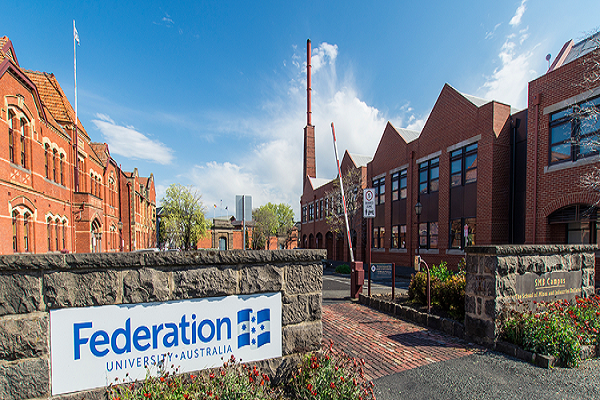Title:
Geomaterials and Environmental Engineering:
Testing, Modelling and Climate-Resilient Design of Slope Stability
Date:
January 21st, 2026 (UTC+10)
Organizer:
Federation University Australia
Symposium Chair:

Dr. Manoj Khandelwal
Personal Bio:
Dr. Manoj Khandelwal is an Associate Professor and Program Coordinator (UG & PG) of Mining Engineering at Federation University Australia and an Australian Endeavour Fellow. He holds a bachelor's degree in Mining Engineering, a master's in Rock Mechanics, and a PhD in Rock Blasting. His career includes roles as Assistant Professor at MPUAT, Senior Research Fellow at CIMFR Dhanbad, and Postdoctoral Researcher at Monash University. With over 20 years of research and teaching experience in Australia and India, Dr. Khandelwal is widely recognised as a leading expert in mining geomechanics and rock blasting. He has authored over 240 publications and a technical book, with more than 7,170 citations and an h-index of 49 (Scopus). He has completed multiple research and consultancy projects, received numerous prestigious awards, and serves on editorial boards and as a reviewer for leading international journals.
Committee Members:
Dr. Moshood Onifade, Federation University Australia, Australia, m.onifade@federation.edu.au
Dr. Yewuhalashet Fissha, National Institute of Technology, Asahikawa College, Japan, yewuhala@asahikawa-nct.ac.jp
Dr. Danial Armaghani, University Technology Sydney, Australia, danial.jahedarmaghani@uts.edu.au
Dr. Rajesh Rai, Indian Institute of Technology Varanasi, India, rajeshrai.min@iitbhu.ac.in
Dr. Masoud Monjezi, Tarbiat Modares University, Iran, m.monjezi@modares.ac.ir
Call for Papers
Background:
Slope stability is a critical aspect of geotechnical and environmental engineering, directly influencing the safety, sustainability, and economic viability of infrastructure, mining, and civil construction projects. The behaviour of geomaterials, including soil, rock, and soil-rock mixtures, under varying hydrological and mechanical conditions plays a decisive role in the stability of natural and engineered slopes. Traditional testing and modelling approaches provide valuable insights, but their predictive capacity is being increasingly challenged by the impacts of climate change, such as extreme rainfall events, rising groundwater levels, and temperature variations. These factors can accelerate slope failures and amplify associated environmental and socio-economic risks. Developing robust, climate-resilient design strategies requires integrating advanced laboratory testing, field monitoring, and numerical modelling to better capture the complex interactions between geomaterials and external stresses.
Goal/Rationale:
The increasing frequency of extreme weather events, driven by climate change, poses significant challenges to slope stability worldwide. Conventional geotechnical practices, while effective under normal conditions, often fail to fully capture the dynamic interactions between rainfall infiltration, pore-water pressure variations, and the hydro-mechanical behaviour of geomaterials. This gap increases the risk of slope failures, threatening infrastructure, mining operations, and communities. There is therefore a pressing need to enhance predictive models and design practices to ensure greater resilience.
Recent advances in laboratory testing techniques, coupled with high-resolution field monitoring and numerical modelling, now allow for more realistic representation of slope behaviour under climate-induced stressors. Innovative methods such as coupled hydro-mechanical simulations, remote sensing technologies, and machine learning approaches further improve predictive accuracy and decision-making. This symposium aims to address these challenges by bringing together researchers and practitioners to explore testing methods, modelling tools, and climate-resilient design strategies, ultimately advancing safer and more sustainable geotechnical practices.
Scope and Information for Participants:
This symposium will focus on advancing knowledge and practical approaches to slope stability through the study of geomaterials, testing methods, and climate-resilient design strategies. Participants will gain insights into how laboratory investigations, field monitoring, and numerical modelling can be integrated to better understand slope behaviour under varying hydro-mechanical and climatic conditions. Specific themes include advanced laboratory testing of soils, rocks, and soil-rock mixtures; coupled hydro-mechanical modelling of slope behaviour; the role of rainfall, groundwater, and extreme weather events in triggering failures; application of numerical and data-driven approaches for slope analysis; and strategies for climate-resilient slope design and monitoring. The symposium will also highlight case studies linking research to practice, offering a platform for knowledge exchange between academia, industry, and government. Participants are encouraged to contribute experiences, methodologies, and innovations that can inform safer and more sustainable slope engineering practices.
Topics:
The main topics of this symposium are listed below.
Environmental Engineering
- Pollution Treatment Technology
- Energy Technologies
- Geography
- Pollution Control
- Sustainability Technology
- Waste Management
- Atmospheric Science
- Environmental Chemistry
- Geophysics
- Hydrology
- Oceanography Physics
- Soil Science
Meanwhile, submissions aligned with the overall conference theme are also welcome.
Materials Science and Engineering
- Advanced Nanomaterials and Graphene
- Advanced Materials Processing and 3D Printing
- Emerging Materials
- Electric and Magnetic Materials
- Glasses, Ceramics and Composites
- Material Thermodynamics
- Optic and Acoustic Materials
- Semiconductors and Super Conductors
- Advanced Materials and Technologies
- Biomaterials
- Energy Materials
- Functional Materials
- Material Mechanics and Structure
- Metal and Alloy
- Polymer Science and Engineering
- Smart Materials and Structures
Chemical Science and Technology
- Modelling Simulation and Optimization
- Mass Transfer as Separation Processes
- Physical and Organic Chemistry
- Polymer Science and Engineering
- Transport Phenomena and IPC
- Chemical Reaction Engineering and Catalysis
- Oil, Gas and Petroleum Refineries
- Chemical Engineering Thermodynamics
- Electrochemistry
- Process Heat Transfer
- Nano-Chemistry and Nanotechnology
Submission:
Prospective authors are kindly invited to submit full papers that include title, abstract, introduction, tables, figures, conclusion and references. It is unnecessary to submit an abstract in advance. Please submit your papers in English.
Each paper should be no less than 4 pages. One regular registration can cover a paper of 6 pages, and additional pages will be charged. Please format your paper well according to the conference template before submission. Paper Template Download
Please prepare your paper in both .doc/.docx and .pdf format and submit your full paper by email with both formats attached directly to sympo_mounthelen@confmcee.org
Important Dates:
| Process | Date & Time |
|---|---|
| Submission Deadline | January 9, 2026 |
| Symposium Date | January 21, 2026 |
| Notification of Acceptance | 7-20 workdays |
Publication:
Accepted papers of the symposium will be published in Applied and Computational Engineering (ACE) (Print ISSN 2755-2721), and will be submitted to Conference Proceedings Citation Index (CPCI), Crossref, CNKI, Portico, Engineering Village (Inspec), Google Scholar, and other databases for indexing. The situation may be affected by factors among databases like processing time, workflow, policy, etc.
Publication info
Title: Applied and Computational Engineering (ACE)
Press: EWA Publishing, United Kingdom
ISSN: 2755-2721, 2755-273X (electronic)
This symposium is organized by CONF-MCEE 2026 and it will independently proceed the submission and publication process.
* The papers will be exported to production and publication on a regular basis. Early-registered papers are expected to be published online earlier.
Ways to Participate
Venue:
Federation University Australia, Mt Helen Campus, Ballarat, VIC 3350, Australia
Attend in Person:
If you want to attend the symposium on-site, please email sympo_mounthelen@confmcee.org. The symposium seats are limited. Both contributors and non-contributors who wish to participate in the symposium in person need to apply to the symposium organizers.
VISA:
https://immi.homeaffairs.gov.au/homeIn order to ensure the information is correct and up to date, there may be changes which we are not aware of. And different countries have different rules for the visa application. It is always a good idea to check the latest regulations in your country. You should confirm details with your local Consular Office. This page just gives some general information of the visa application.
Australia Visa Information
Do I need a visa to enter Australia?
Unless you are an Australian citizen, you will need a valid Australian visa to enter the country. New Zealand passport holders can apply for a visa upon arrival in the country. All other passport holders, regardless of age, must apply for a visa before leaving home. You can apply for a range of Australian visa types, including tourist visas and working holiday visas, at your nearest Australian Embassy or Consulate. You can also apply for certain types of visas on the Australian Department of Home Affairs website.
There are different Australian visa types available for travelers to Australia. Knowing which Australian visa to apply for depends on the length of your stay, your passport and the purpose of your visit. You'll also need to meet certain financial and medical requirements, be outside of Australia when applying and maintain health insurance for the duration of your stay.
Electronic Travel Authority Visa (subclass 601)
This visa allows you to visit Australia as many times as you want, for up to a year, and stay for three months each visit. This visa is available to passport holders from a number of countries and regions, who live outside Australia. A step-by-step guide on how to apply is here.
E-Visitor (subclass 651)
This is a free visa for multiple visits to Australia for tourism or business purposes for up to three months at a time within a 12-month period. This visa is available to passport holders from a number of European countries and it cannot be extended.
Visitor visa (subclass 600)
The Visitor visa allows you to visit Australia, either for tourism or business purposes. It is open to all nationalities. Generally, a period of stay of up to three months is granted, but up to 12 months may be granted in certain circumstances. Applicants will have to pay a fee to submit their application.
How can I apply for an Australian tourist visa?
The application process may differ depending on which visa you need. You can only apply for the Electronic Travel Authority visa (subclass 601) through the Australian ETA app. A step-by-step guide on how to apply is located here.
For other visas, you can apply online by creating an ImmiAccount and completing the application process. Be sure to submit your application well in advance of your travel date to allow enough time for processing. You may be asked to provide further supporting information. You will be notified in writing if your tourist visa is approved and it will be digitally linked to your passport.
For more information on different visa types, and Australian visa requirements including how to apply for an Australian visa, visit the Department of Home Affairs website.
